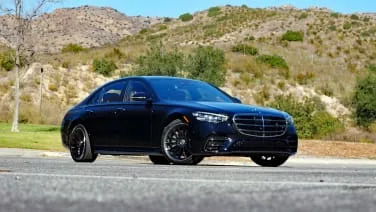2023 Mercedes-Benz S-Class
IMMENDINGEN, Germany — Set your time machine to August 1888. It's hot, humid, and you're in a small German town enjoying a refreshing pint of hefeweizen when an unusual noise breaks the silence. It almost sounds like a train, but it can't be — there are no tracks for a train to travel on. The source of the cacophony appears halfway through your next sip: It's carriage-like, yet there's no horse pulling it and it's eerily moving under its own power.
Back to the present (you can bring the hefeweizen with you). It's hot, humid, and you're relaxing in a …
Full Review
Full Review
IMMENDINGEN, Germany — Set your time machine to August 1888. It's hot, humid, and you're in a small German town enjoying a refreshing pint of hefeweizen when an unusual noise breaks the silence. It almost sounds like a train, but it can't be — there are no tracks for a train to travel on. The source of the cacophony appears halfway through your next sip: It's carriage-like, yet there's no horse pulling it and it's eerily moving under its own power.
Back to the present (you can bring the hefeweizen with you). It's hot, humid, and you're relaxing in a …
Hide Full Review
Retail Price
| Engine | I-6 |
| MPG | 20 City / 28 Hwy |
| Seating | 5 Passengers |
| Transmission | 9-spd auto w/OD |
| Power | 362 - 496 hp |
| Drivetrain | 4MATIC all wheel |
| Curb Weight | 4,641 - 5,445 lbs |








